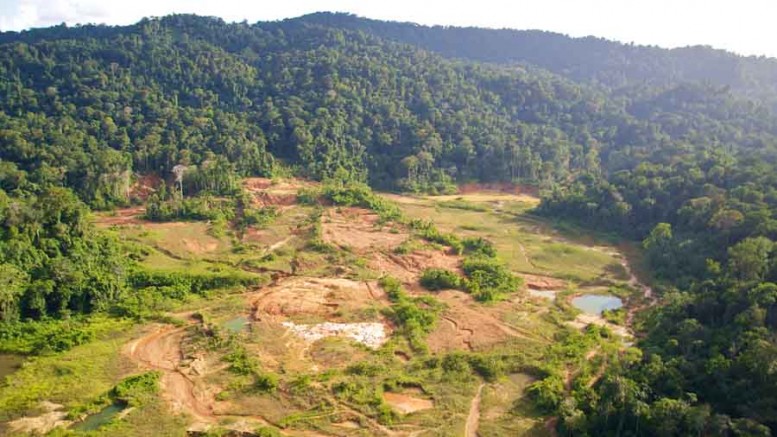The latest results from Columbus Gold’s (CGT-V) Paul Isnard gold project in French Guiana have the company thinking big.
The highlight hole returned 1.56 grams gold per tonne over 110 metres, while a second hole assayed 2.02 grams gold over 29 metres and extended mineralization 50 metres west of the current deposit.
The assay results came out of the most recent four diamond core holes that were drilled for 1,327 metres. Three of the holes confirmed extension and continuity of gold mineralization between historic holes drilled in earlier programs at the central part of the Montagne d’Or gold deposit.
Montagne d’Or is an east–west striking, steeply south dipping, tabular orebody made of two sub-parallel gold mineralization zones: the Upper Felsic zone and the Lower Favorable zone. Both are hosted by laminated felsic volcanics within a Precambrian greenstone sequence.
The deposit has a compliant inferred resource that is based on 10,600 metres of drilling from the late 1990s. The estimate stands at 36 million tonnes grading 1.6 grams gold for 1.9 million inferred oz gold.
The historic holes tested by the latest round of drilling are as much as 200 metres apart, and with mineralization found in most of them, Columbus says it will fire up a second drill rig so that it can more aggressively explore the area.
The company is performing its first phase of drilling. The program is made up of 15,000 metres drilled over 50 holes with the aim of expanding the resource below the previously defined deposit.
To do that, Columbus is drilling between the historic holes, and also down to a vertical depth of 200 metres. The denser drill pattern, with holes at 50-metre centres, should allow it to convert inferred resources into the measured and indicated categories.
The company says the mineralized zone has been outlined over 2,000 metres along strike and averages 70 metres in thickness. It has been tested to depths ranging from 100 metres to 150 metres.


Be the first to comment on "Columbus grows Paul Isnard"